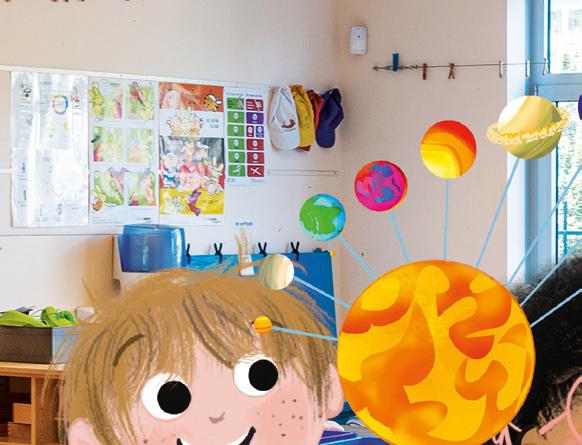
1 minute read
ThE EaRtH
My objectives are:
• To learn about the Universe and the celestial bodies in it.

• To identify the different layers of the Earth.
• To understand the Earth’s movements and what they cause.
WaTcH aNd lEaRn!
Which living beings have travelled into space?
Look at the picture and answer the questions.

a) Where are Sol and Ben?
b) What are they holding?
c) What does it show?
1 Listen and read. Our field trip
Yesterday, my class visited a planetarium. It was great! We learned about our galaxy, the Milky Way, and the different planets in it. Did you know that, thousands of years ago, in the 6th century BCE, a Greek philosopher called Anaximander realised that the Earth was round? Then, later, in the 3rd century BCE, Eratosthenes, a Greek mathematician and astronomer, demonstrated that his theory was correct by observing the shadow of a stick on the ground. But, the Greek philosopher Anaxagoras was recognised for this discovery when he observed the Earth’s shadow after a lunar eclipse. It’s amazing how much ancient people discovered just by observing!
Many centuries later, human beings wanted to know more about the Universe. In 1957, the Russians sent a dog called Laika into space in a satellite called Sputnik 2. She was the first living being in space! Later, in 1961, the Russian pilot and cosmonaut Yuri Gagarin was the first man in space. Then, in 1963, a Russian engineer and cosmonaut called Valentina Tereshkova became the first woman in space. Finally, in 1969, Neil Armstrong, an American engineer and astronaut, was the first person to walk on the Moon. Incredible!
Maybe I will travel to space one day. Nothing is impossible!
3 Copy and complete the sentences.
a) Our galaxy is called the … .
b) The … discovered that the Earth is round.
c) The rst living being in space was … in … .
d) The rst man in space was …. in… .
e) The rst woman in space was … in … .
f) The rst person to walk on the Moon was … in … .





